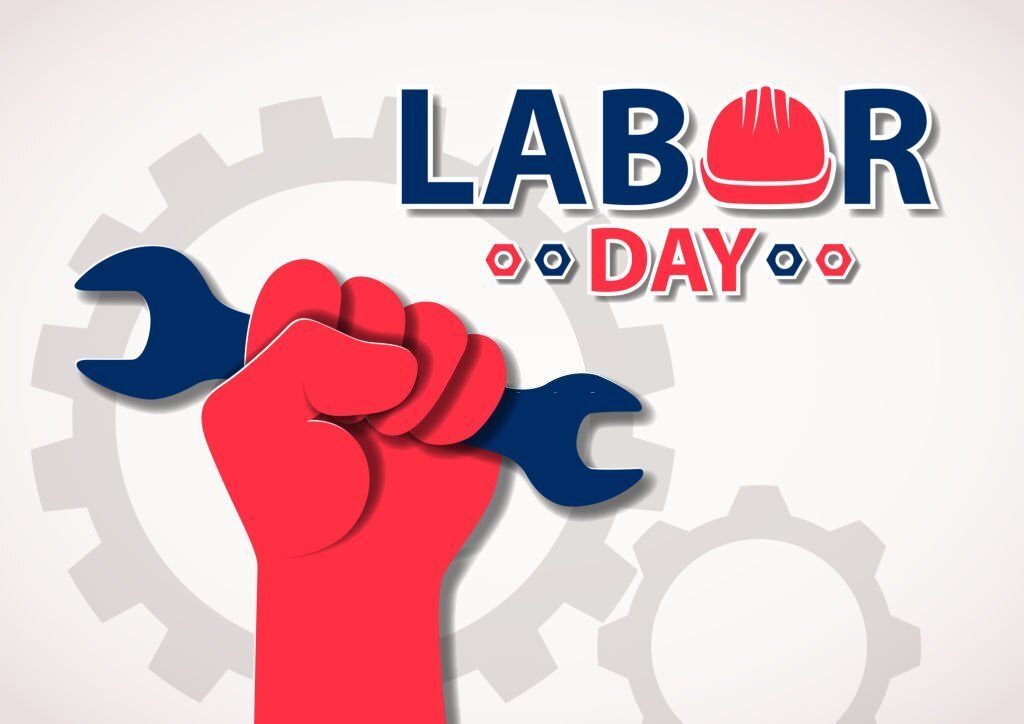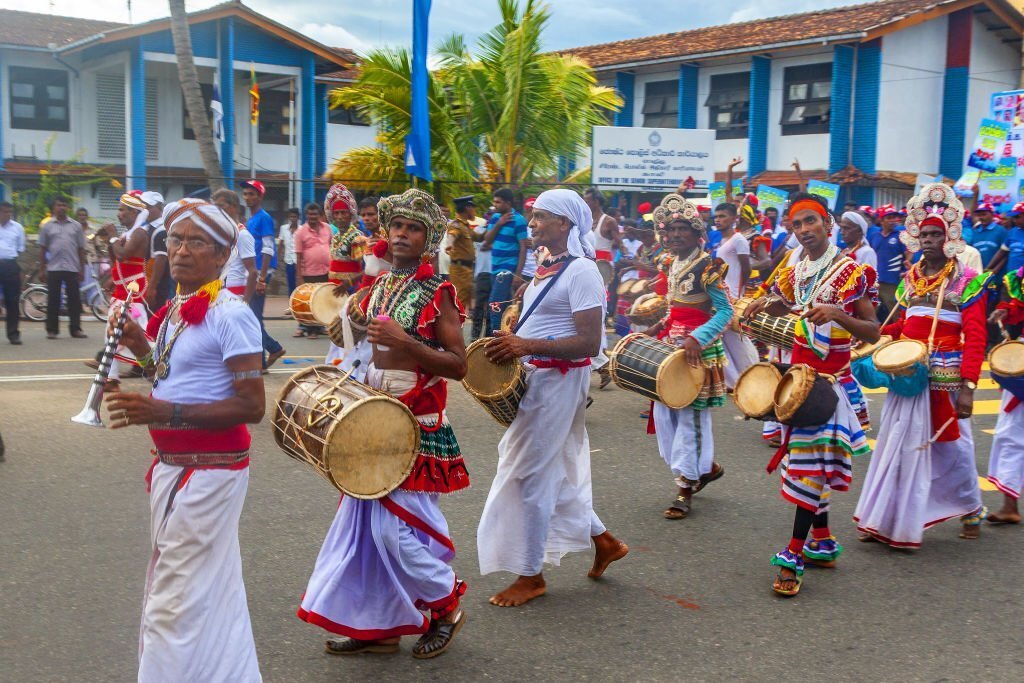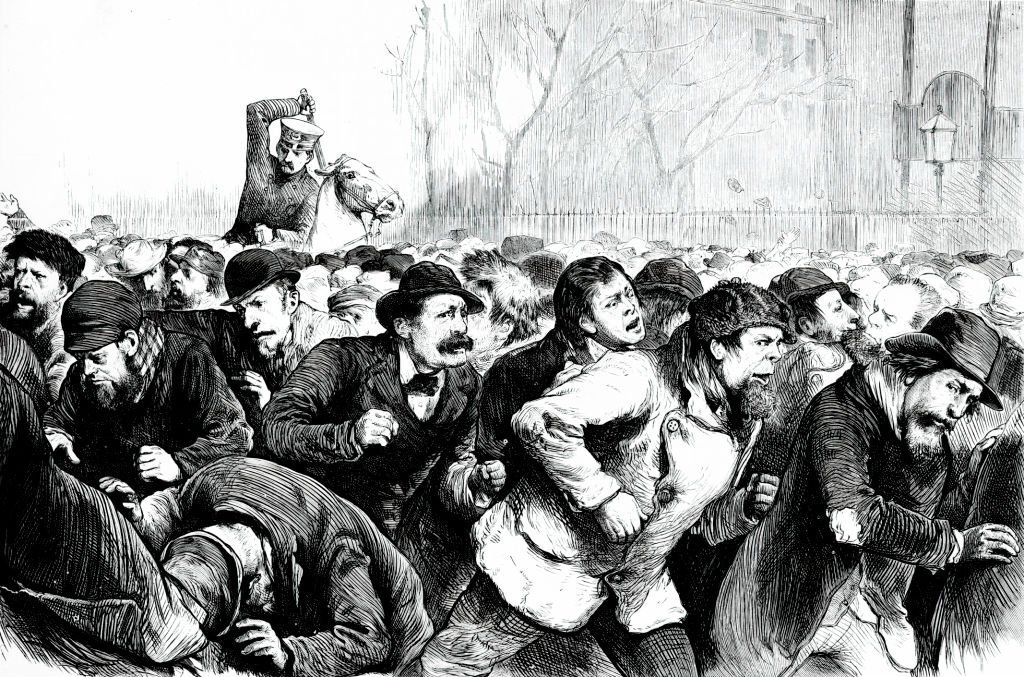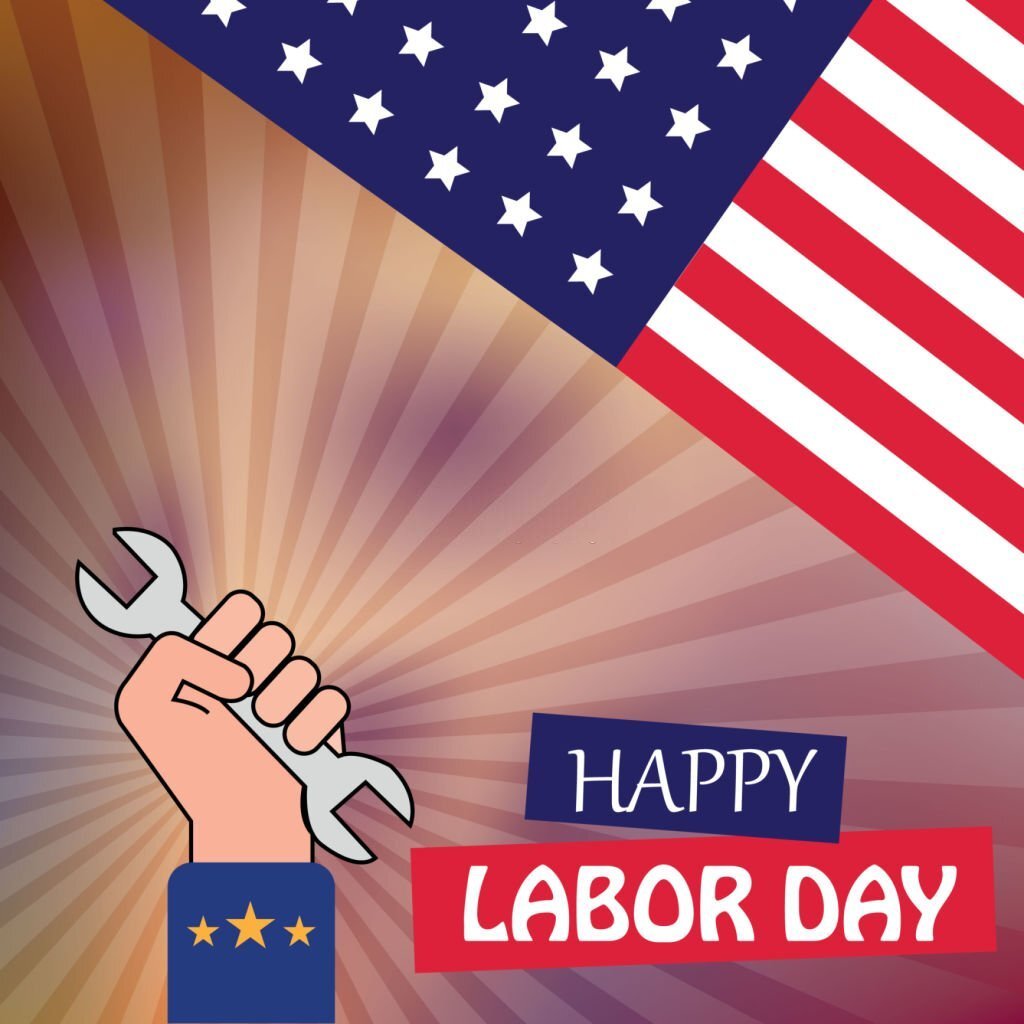May Day is more than just a holiday – it’s a symbol of unity and solidarity in the fight for fair wages, better working conditions, and social justice. Join us as we explore the global traditions and contemporary issues surrounding May Day, and discover how you can join the movement for a more equitable and just future.
Introduction

Definition of May Day
May Day, also known as International Workers’ Day, is a global holiday celebrated annually on May 1st. It is a day that honors the historical struggle for workers’ rights and the achievements of the labor movement. May Day has its roots in the late 19th century, when workers in the United States and Europe began organizing for better working conditions, including an eight-hour workday. Today, May Day is celebrated in many countries around the world, often with parades, demonstrations, and other events that promote unity, solidarity, and social justice. In this blog post, we will explore the history and significance of May Day, from its ancient pagan roots to its modern-day activism, and examine how it continues to inspire and empower workers worldwide.
Brief history of the holiday
May Day has a rich and varied history that spans centuries and continents. Its origins can be traced back to ancient pagan festivals, such as the Gaelic Beltane and the Roman Floralia, which celebrated the arrival of spring and the renewal of life. These festivals often involved dancing around a Maypole and the exchange of flowers, and they symbolized the fertility and abundance of the natural world.
In the late 19th century, May Day took on a new meaning as workers in the United States and Europe began organizing for better working conditions and fair wages. The Haymarket Riot of 1886 in Chicago, which led to the deaths of several workers and police officers, was a turning point in the labor movement and helped to establish May 1st as International Workers’ Day. In subsequent years, May Day became a time for workers to rally and protest for their rights, and it was often marked by strikes, demonstrations, and other forms of collective action.men
Over time, May Day has become a global celebration of workers’ rights and social justice, and it is observed in many countries around the world. In some places, it is a public holiday, while in others, it is marked by demonstrations and other events. May Day remains an important symbol of unity and solidarity for workers, and it continues to inspire and empower people to fight for a more equitable and just world.
Explanation of the holiday’s significance
May Day is significant because it represents a long-standing struggle for workers’ rights and social justice. Throughout history, workers have faced many challenges, including unsafe working conditions, long hours, low wages, and exploitation by employers. The labor movement, which emerged in the late 19th century, sought to address these issues and to fight for the rights of workers.
May Day became an important symbol of this struggle because it was a time for workers to come together and demand change. By organizing strikes, demonstrations, and other forms of collective action on May 1st, workers were able to show their strength and solidarity and to bring attention to the issues they faced. May Day also served as a way for workers to connect with each other across national borders and to recognize their shared struggles and common goals.
Today, May Day remains significant because it continues to inspire and empower workers around the world. Despite the progress that has been made in some countries, workers still face many challenges, including low wages, inadequate working conditions, and discrimination. May Day serves as a reminder that the fight for workers’ rights and social justice is ongoing, and that it requires ongoing commitment and action. By celebrating May Day and supporting the labor movement, we can work towards a more equitable and just world for all.
The Origins of May Day
Historical roots of May Day in ancient cultures and religions
May Day has its origins in ancient pagan festivals that celebrated the arrival of spring and the renewal of life. Many cultures around the world marked the changing of the seasons with festivals and rituals that involved dancing, feasting, and other forms of celebration.
One of the most famous of these festivals was Beltane, which was celebrated by the Gaels in Scotland and Ireland. Beltane marked the beginning of summer and was a time to honor the fertility of the land and the abundance of nature. The festival involved lighting bonfires, dancing around a Maypole, and the exchange of flowers and other gifts. Similar festivals were celebrated in other parts of Europe, such as the Roman Floralia and the Germanic Walpurgisnacht.
These pagan festivals were often suppressed by the Christian church, which viewed them as pagan and immoral. However, some of the traditions associated with May Day survived and were incorporated into Christian celebrations, such as the May Day processions and the crowning of the May Queen.
In the 19th century, May Day took on a new meaning as workers began organizing for better working conditions and fair wages. The Haymarket Riot of 1886 in Chicago was a turning point in the labor movement and helped to establish May 1st as International Workers’ Day. Today, May Day is celebrated around the world as a day to honor the historical struggle for workers’ rights and to promote social justice and solidarity.
Evolution of May Day as a labor holiday
May Day evolved into a labor holiday in the late 19th century, as workers in industrialized countries began to organize and advocate for better working conditions, fair wages, and other labor rights. In the United States, the Haymarket Riot of 1886 played a significant role in the establishment of May Day as a labor holiday.
On May 1st, 1886, thousands of workers across the United States went on strike to demand an eight-hour workday. In Chicago, a peaceful demonstration turned violent when a bomb exploded, killing several people, including police officers. The incident, which became known as the Haymarket Riot, led to the trial and execution of several labor activists and became a symbol of the struggle for workers’ rights.
In 1889, the International Socialist Conference declared May 1st as International Workers’ Day in commemoration of the Haymarket Riot and to promote the struggle for workers’ rights worldwide. The holiday was officially recognized by the Soviet Union in 1920 and was celebrated as a national holiday in many socialist and communist countries throughout the 20th century.
Today, May Day is celebrated as a labor holiday in many countries around the world. It serves as a reminder of the struggles and sacrifices of workers who fought for better working conditions and labor rights, and as a call to action to continue advocating for social justice and workers’ rights.
Explanation of the connection between workers’ rights and May Day
The connection between workers’ rights and May Day can be traced back to the Haymarket Riot of 1886, which became a symbol of the struggle for workers’ rights worldwide. On May 1st, 1886, thousands of workers across the United States went on strike to demand an eight-hour workday. In Chicago, a peaceful demonstration turned violent when a bomb exploded, killing several people, including police officers. The incident led to the trial and execution of several labor activists, and it became a rallying cry for workers’ rights advocates around the world.
In 1889, the International Socialist Conference declared May 1st as International Workers’ Day in commemoration of the Haymarket Riot and to promote the struggle for workers’ rights worldwide. Since then, May Day has become a symbol of the labor movement and a reminder of the ongoing struggle for workers’ rights and social justice.
May Day is celebrated around the world as a day to honor the historical struggle for workers’ rights and to promote solidarity among workers. It is an occasion for workers to come together, reflect on their struggles and achievements, and renew their commitment to the fight for fair wages, better working conditions, and social justice. May Day is also a time to recognize the contributions that workers make to society and to advocate for policies and practices that support their well-being and dignity.
May Day Celebrations Around the World
Description of how May Day is celebrated in different countries and cultures

May Day is celebrated in different ways in countries and cultures around the world. Here are some examples:
- United States – In the United States, May Day is not as widely celebrated as in other countries. However, in some communities, there are labor parades and rallies, as well as festivals that feature Maypole dances and other traditional May Day activities.
- United Kingdom – May Day is celebrated on the first Monday in May in the United Kingdom. In some parts of the country, there are Maypole dances and Morris dancing, a traditional form of English folk dance. May Day is also associated with the crowning of the May Queen, a young girl chosen to represent the spirit of spring.
- France – May Day, or “La Fête du Muguet,” is celebrated in France by giving lily-of-the-valley flowers to loved ones as a symbol of spring and good luck. There are also labor parades and demonstrations in many cities.
- Germany – May Day, or “Tag der Arbeit,” is a national holiday in Germany. There are labor parades and demonstrations, as well as street festivals and Maypole dances. In some regions, it is also traditional to light bonfires on the eve of May Day.
- Mexico – May Day, or “El Día del Trabajo,” is a national holiday in Mexico. There are labor parades and demonstrations, as well as festivals that feature music, dance, and traditional foods.
- Indonesia – May Day, or “Hari Buruh Internasional,” is celebrated in Indonesia with labor parades and demonstrations, as well as speeches and cultural performances.
These are just a few examples of how May Day is celebrated around the world. Although the traditions and customs may vary, the holiday is a reminder of the struggles and achievements of workers throughout history, and a call to continue advocating for workers’ rights and social justice.
Examples of traditional May Day celebrations and rituals
May Day has a long history of traditional celebrations and rituals, many of which are still observed today. Here are some examples:
- Maypole dancing – One of the most well-known May Day traditions is dancing around the Maypole. A tall pole is erected and decorated with ribbons and flowers, and people dance around it, weaving the ribbons in intricate patterns.
- Flower crowns – In many cultures, it is traditional to wear flower crowns on May Day as a symbol of spring and new life. Crowns are made from a variety of flowers and greenery, depending on the region.
- May Queen – In some communities, a young girl is chosen to represent the spirit of spring as the May Queen. She is usually crowned in a ceremony and leads the May Day procession.
- Morris dancing – Morris dancing is a traditional form of English folk dance that is often performed on May Day. Dancers wear colorful costumes and dance to lively music, often accompanied by musicians playing instruments like the accordion and fiddle.
- May baskets – In the United States, it is traditional to make and deliver May baskets on May Day. These are small baskets filled with flowers or treats, left anonymously on a neighbor’s doorstep as a sign of friendship and goodwill.
- Bonfires – In some parts of Europe, it is traditional to light bonfires on the eve of May Day. This is said to have originated as a way to ward off evil spirits and promote good luck and fertility.
These are just a few examples of the many traditional May Day celebrations and rituals that have been passed down through the generations. They are a reminder of the importance of honoring and preserving our cultural heritage.
Comparison of the different ways May Day is observed globally
May Day, also known as International Workers’ Day, is observed in various ways across the globe. Here are some of the differences in how May Day is celebrated in different countries:
- Europe – In many European countries, May Day is a national holiday, and people often take the day off work to attend parades and rallies in support of workers’ rights. In some countries, like Germany and Austria, there are also traditional May Day celebrations, including dancing, singing, and the crowning of a May Queen.
- United States – May Day is not a federal holiday in the United States, but some cities and communities hold parades or rallies to raise awareness of workers’ issues. May Day is also associated with the labor movement and is sometimes used as an occasion to protest for better wages and working conditions.
- Latin America – In many countries in Latin America, May Day is a public holiday, and workers often attend parades and rallies to demand better working conditions and fair wages. In some countries, like Cuba, May Day is a major national holiday, with large-scale celebrations and parades.
- Asia – In Asia, May Day is celebrated in a variety of ways, depending on the country. In China, May Day is a three-day public holiday, and many workers use the occasion to travel or take part in cultural activities. In Indonesia, May Day is often marked by rallies and demonstrations in support of workers’ rights.
- Africa – In many African countries, May Day is celebrated with parades, speeches, and cultural activities. In some countries, like Zimbabwe, May Day is also a time to recognize the contributions of workers to the country’s development.
Despite the differences in how May Day is celebrated around the world, the holiday remains an important reminder of the struggles and achievements of workers throughout history. It is a time to reflect on the progress that has been made in the fight for workers’ rights, as well as the challenges that still lie ahead.
May Day and Workers’ Rights

Overview of the historical struggle for workers’ rights
The struggle for workers’ rights has a long and storied history, dating back to the early days of industrialization in the 19th century. At that time, workers faced long hours, low pay, and dangerous working conditions, with little legal protection or recourse.
As industrialization continued to spread throughout the world, so did the labor movement. Workers began to organize into unions and other groups to demand better wages, shorter hours, and safer working conditions. They also pushed for laws and regulations to protect workers’ rights and safety.
Over time, the labor movement achieved many important victories, including the eight-hour workday, the weekend, and the right to form unions and bargain collectively. These gains were often won through hard-fought battles, including strikes, protests, and other forms of direct action.
Today, workers’ rights remain an important issue around the world, as many people continue to struggle for fair pay, safe working conditions, and other basic protections. May Day is an important occasion for workers to come together and raise awareness of these issues, as well as to celebrate the achievements of the labor movement and honor those who have fought for workers’ rights throughout history.
Explanation of the role of May Day in the labor movement
May Day has long been an important date for the labor movement around the world. The holiday’s origins in the struggles of working people for better conditions and rights make it a natural focal point for labor organizing and activism.
In the United States, May Day has particular significance as the date of the 1886 Haymarket Massacre in Chicago, where police killed several striking workers and anarchists during a protest for the eight-hour workday. The event helped galvanize the labor movement and cement May Day’s place as a day to honor the sacrifices of those who fought for workers’ rights.
In other countries, May Day has been celebrated as an official holiday since the late 19th or early 20th century, often with parades, speeches, and other events organized by labor unions and other worker organizations. In many places, May Day has also been associated with political activism and protests, as workers and their allies use the occasion to call for greater social and economic justice.
Overall, May Day serves as a reminder of the important role that working people have played in shaping society and the economy, as well as a call to action for those who believe in the value of fair pay, safe working conditions, and other basic protections for workers.
Discussion of current labor issues and the continued relevance of May Day

Despite many important gains made by the labor movement over the years, workers continue to face a range of challenges and injustices in the modern world. Some of the most pressing labor issues today include:
- Income inequality: In many countries, the gap between the rich and poor continues to widen, with workers often struggling to make ends meet on low wages while wealthy individuals and corporations amass ever-greater amounts of wealth.
- Job insecurity: Many workers today face precarious employment situations, including temporary and contract work, which can make it difficult to plan for the future or build a stable career.
- Workplace safety: Although workplace safety has improved significantly in many industries, there are still many workers who face dangerous conditions on the job, including exposure to hazardous chemicals, machinery, and other risks.
- Discrimination: Workers from marginalized communities, including women, people of color, and LGBTQ+ individuals, often face discrimination and harassment on the job, which can make it difficult to advance their careers or even to feel safe at work.
These and other labor issues underscore the continued relevance of May Day as a day to reflect on the ongoing struggle for workers’ rights and to advocate for greater social and economic justice. By coming together in solidarity and raising their voices in support of one another, workers and their allies can continue to make progress in building a more just and equitable society.
May Day in the Modern World
Description of how May Day is celebrated today
May Day is celebrated in various ways around the world. In some countries, it remains a formal public holiday, while in others, it has evolved into more of a cultural or social event. Here are some examples of how May Day is celebrated today:
- Public demonstrations and protests: May Day is often marked by public demonstrations and protests, with workers and labor unions taking to the streets to demand better working conditions, fair wages, and other labor-related issues.
- Festivals and cultural events: In many countries, May Day has become a cultural celebration featuring music, dance, and other performances, often incorporating traditional themes such as springtime and rebirth.
- Community gatherings: May Day is also celebrated in many places as a time for communities to come together and celebrate, often with picnics, parades, and other outdoor activities.
- Political activism: May Day has long been associated with political activism, and many organizations use the holiday as an opportunity to raise awareness about issues such as workers’ rights, environmentalism, and social justice.
- Online and virtual events: In recent years, there has been a growing trend of virtual events and social media campaigns to mark May Day, allowing people from all over the world to participate in celebrations and advocacy efforts.
Overall, May Day remains an important day for workers and their allies around the world, serving as a reminder of the ongoing struggle for social and economic justice and a call to action for those who seek to build a better, more equitable world.
Analysis of the continued importance of May Day in contemporary society
May Day continues to be an important holiday for workers and labor movements around the world. Here are a few reasons why May Day remains relevant in contemporary society:
- Ongoing labor struggles: Despite many advances in workers’ rights over the past century, there are still many labor-related issues that require attention and action. May Day provides an opportunity for workers and their allies to come together and advocate for fair wages, better working conditions, and other important issues.
- Growing income inequality: Income inequality is a major issue in many countries around the world, with the gap between the rich and poor continuing to widen. May Day can serve as a reminder of the need for greater economic justice and an end to systemic inequality.
- Globalization and the changing nature of work: With the rise of globalization and the gig economy, many workers find themselves in precarious and unstable employment situations. May Day can be a time to highlight the importance of job security and the need for protections for workers in all types of employment.
- Social and political issues: May Day has historically been associated with broader social and political issues, including civil rights, environmentalism, and anti-war activism. In today’s world, May Day can be a platform for advocating for a wide range of issues related to social justice and human rights.
Overall, May Day serves as an important reminder of the ongoing struggle for workers’ rights and social and economic justice. By continuing to observe and celebrate this holiday, we can honor the legacy of those who fought for these rights in the past and continue the work of creating a better, more equitable world for all.
Discussion of the future of May Day and the labor movement

The future of May Day and the labor movement is uncertain, but there are a few key trends and possibilities to consider:
- New forms of labor activism: As work and employment continue to evolve, new forms of labor activism and organization are likely to emerge. This could include things like worker-owned cooperatives, digital organizing, and other innovative approaches to advocating for workers’ rights.
- The impact of globalization: Globalization has had a significant impact on labor markets and employment patterns, and this is likely to continue in the years ahead. As workers around the world become more connected, there may be opportunities for greater collaboration and solidarity across national boundaries.
- Technological change: The continued development of automation, artificial intelligence, and other technologies could have major implications for the future of work and the labor movement. It remains to be seen how workers will adapt and respond to these changes, and what new forms of labor activism may emerge as a result.
- Political and social movements: The future of the labor movement is also likely to be shaped by broader political and social movements, including things like environmentalism, anti-racism, and feminism. These movements may intersect with labor activism in important ways, and could help to shape the future of the labor movement.
Overall, the future of May Day and the labor movement is uncertain, but there are many reasons to be hopeful. As workers and their allies continue to advocate for fair treatment and greater rights, there is the potential to build a more equitable and just society for all.
Conclusion
Summary of key points
In conclusion, May Day is an important holiday with deep historical roots and ongoing relevance to contemporary society. From its ancient origins as a celebration of spring to its modern role as a day for workers’ rights and labor activism, May Day has played an important role in the development of human culture and society. Today, May Day is celebrated in a variety of ways around the world, and continues to be a symbol of unity, solidarity, and social justice. While the future of the labor movement and May Day itself is uncertain, there are many reasons to be optimistic about the possibilities for positive change and progress in the years ahead.
May Day represents a celebration of spring and rebirth, but it is also a day that commemorates the ongoing struggle for workers’ rights and social justice. The historical roots of May Day are diverse and can be traced back to many different cultures and religions, but it was the labor movement that established May Day as an internationally recognized day for workers’ rights. In many parts of the world, May Day is still celebrated with traditional festivities and rituals, but it is also an opportunity for workers to come together to demand better wages and working conditions. Overall, May Day serves as a reminder of the ongoing struggle for social justice and the importance of unity and solidarity in achieving positive change.
May Day is a powerful reminder of the ongoing struggle for workers’ rights and social justice. While progress has been made in many parts of the world, there is still much work to be done to ensure that workers receive fair wages, safe working conditions, and basic human rights. As individuals and members of society, we can play a role in advocating for the rights of workers by supporting labor unions and participating in protests and demonstrations. We can also support businesses that prioritize worker’s rights and make informed decisions about the products and services we consume. By working together, we can continue to build a more just and equitable world for all workers.
